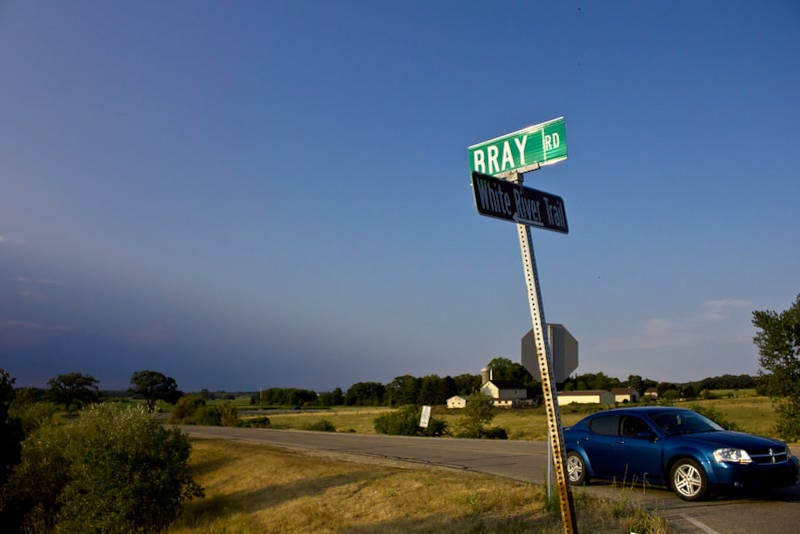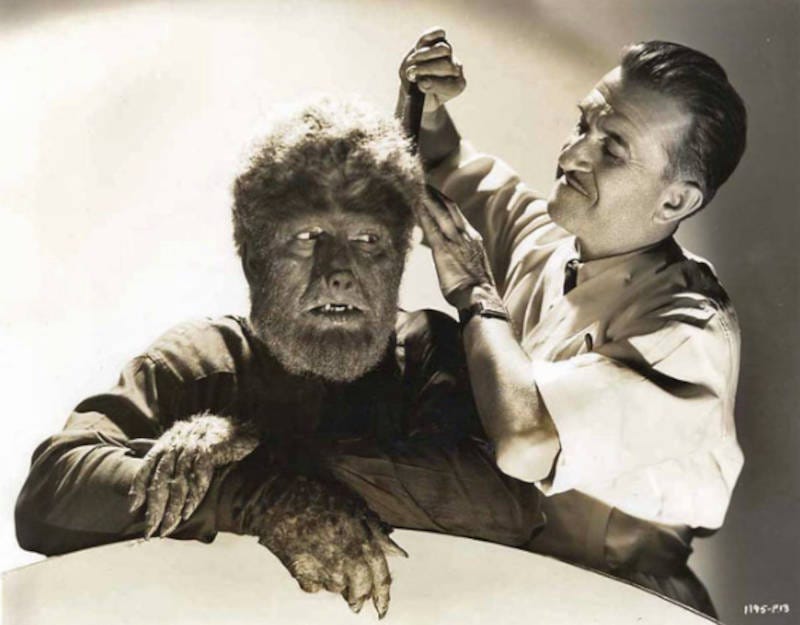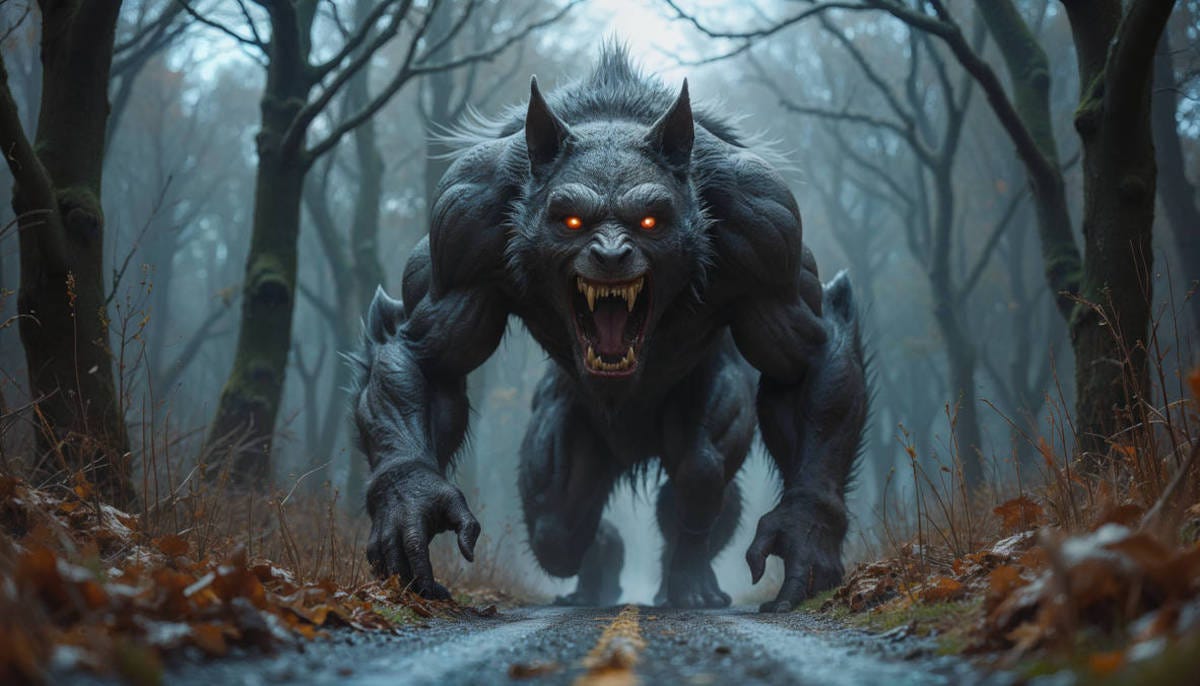Meet the Beast of Bray Road, Wisconsin's World-Famous Werewolf
You thought all the most popular werewolves liked to hang out in London? Think again!
The small towns of Wisconsin have a long association with UFO sightings, haunted houses, and other mysterious phenomena that seem to elude explanation. One example is the quiet rural town of Elkhorn, where nestled among the rolling hills and forests of southeastern Wisconsin, a bizarre creature has been spotted many times over decades roaming the rural areas surrounding Bray Road.
This is the Beast of Bray Road—a cryptid deeply rooted in folklore and legend. Described as an eerie fusion of man and wolf—a werewolf, in other words—this elusive entity has intrigued cryptozoologists, paranormal enthusiasts, and skeptics alike since the very first reports were mentioned in the media. Its fearsome reputation is built upon decades of eyewitness accounts, each contributing to the growing mystery surrounding its existence.
But is this beast real, or merely a figment of human imagination fueled by fear and myth?
Origins and First Sightings of the Beast
The legend of the Beast of Bray Road can be traced back to the 1930s, when the first recorded sighting took place, in 1936. A driver traveling down a quiet road near Elkhorn reportedly encountered a terrifying creature lurking in the darkness, and he was shocked enough to report it to the authorities.
While stories circulated around the town of Elkhorn for decades about other sightings, it wasn’t until the 1980s and early 1990s that reports of the beast gained widespread attention. As the number of alleged encounters grew, the legend spread beyond the local community, capturing national interest.
During this period, multiple witnesses described seeing a massive, fur-covered creature lurking by the roadside or darting through nearby fields. Many accounts shared eerie similarities: glowing eyes peering through the darkness, the sensation of being watched, and even reports of vehicles being scratched or clawed as the beast made contact. Some drivers swore they saw a large, muscular figure sprinting on all fours before abruptly rising onto its hind legs like a man.
Daytime sightings were equally unsettling. Witnesses recounted encounters with a creature displaying distinctly canine features, stalking through cornfields or feasting on roadkill. Some claimed to have seen it sprinting after deer with alarming speed, while others described it exhibiting an almost unnatural intelligence, as though it were studying human behavior from the shadows.

Despite decades of speculation and inquiry, the origins of the Beast of Bray Road remain elusive. Is it a flesh-and-blood predator, an undiscovered species, or merely a persistent urban legend? The line between reality and folklore continues to blur, leaving the mystery unresolved (and perhaps even unresolvable).
Half-Man, Half-Wolf, Half-Myth, Half-Nightmare
Those who claim to have seen the Beast of Bray Road describe it as a massive, bipedal creature, standing between six and seven feet tall, covered in coarse, dark fur. It possesses a head resembling that of a wolf, bear, or large wild dog, with piercing eyes and a muscular frame. Some depictions liken it to a classic werewolf, a vision straight out of ancient myth and horror cinema, or a person’s worst nightmare.
Eyewitness reports vary, with some asserting that the creature moves fluidly between walking on two legs and dropping to all fours to chase prey at astonishing speeds. Others note its disturbing human-like posture, and other movements that suggest some deep intelligence lingers behind its animalistic appearance.
The beast’s association with Bray Road comes from the location of its first well-documented encounters. However, it wasn’t until local newspaper reporter Linda Godfrey began investigating in the late 1980s that the legend took on a life of its own.
Initially skeptical, Godfrey was struck by the sincerity of the witnesses and the consistency of their stories. Living in a small town where everyone knows everyone else, she was struck by the fact that the people making the reports all had good reputations, and did not seem like the types to make up stories or mistake halluciations for reality.
Godfrey’s research culminated in her book Tailing Wisconsin’s Werewolf, which compiled firsthand accounts and theories surrounding the true nature of the beast. She has now gone on to write several more books, filled with stories about all the strange creatures that have been seen in Wisconsin and in other areas of the Upper Midwest.
As her work gained traction, the creature’s legend spread beyond Wisconsin, inspiring documentaries, television specials, novels, and even horror films. The Beast of Bray Road has become nearly as famous as Bigfoot and Mothman as a result of all this attention, although he has resisted the temptation to exploit his fame by presenting himself to the masses.

Investigating the Evidence Behind the Legend
Despite the numerous reports, investigations, and fervent speculation, no concrete proof has ever surfaced to confirm the existence of the Beast of Bray Road (an all-too-typical fact about creatures of this nature). Scientists and skeptics argue that logical explanations may account for the sightings, although at times their “logical” theories seem more unlikely than the Beast actually being real.
Keep reading with a 7-day free trial
Subscribe to Historic Mysteries to keep reading this post and get 7 days of free access to the full post archives.



